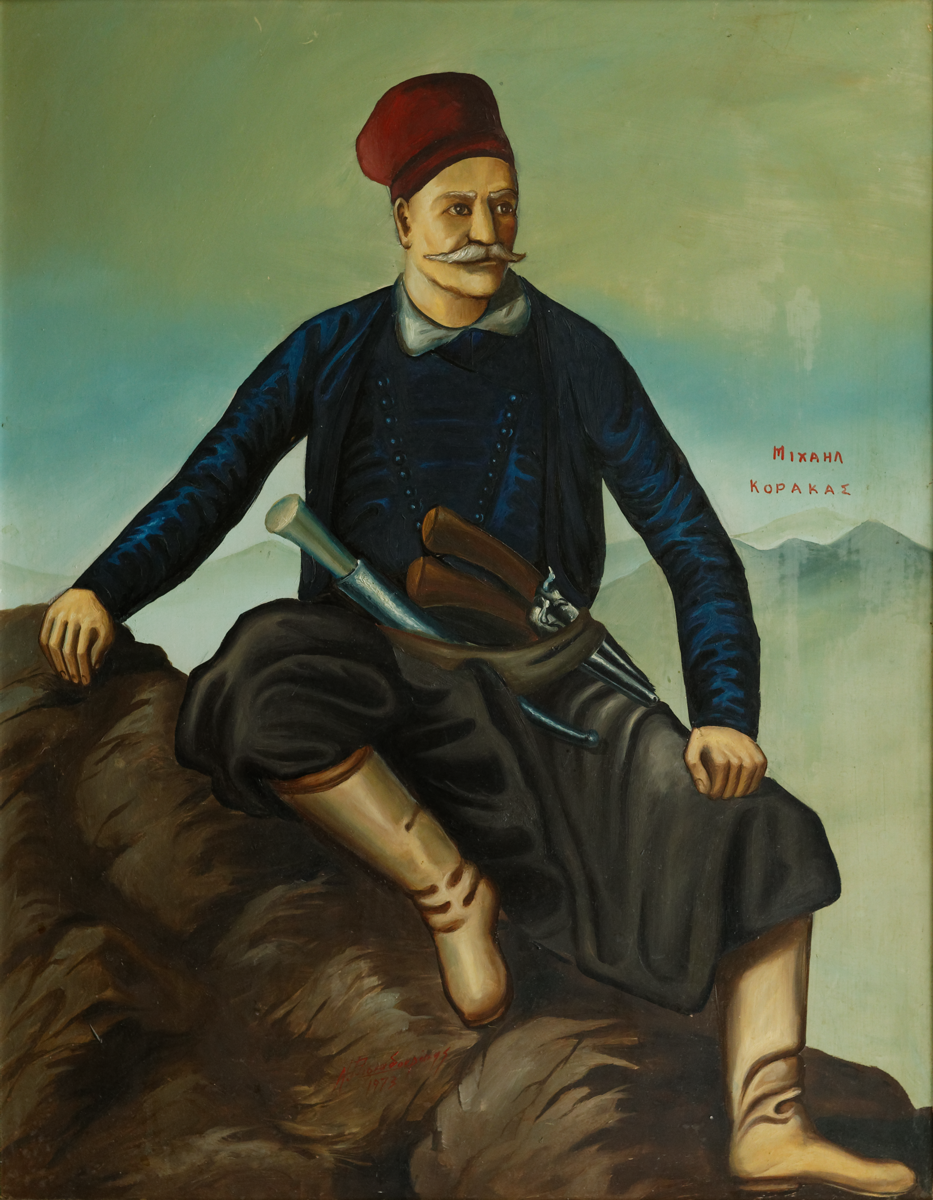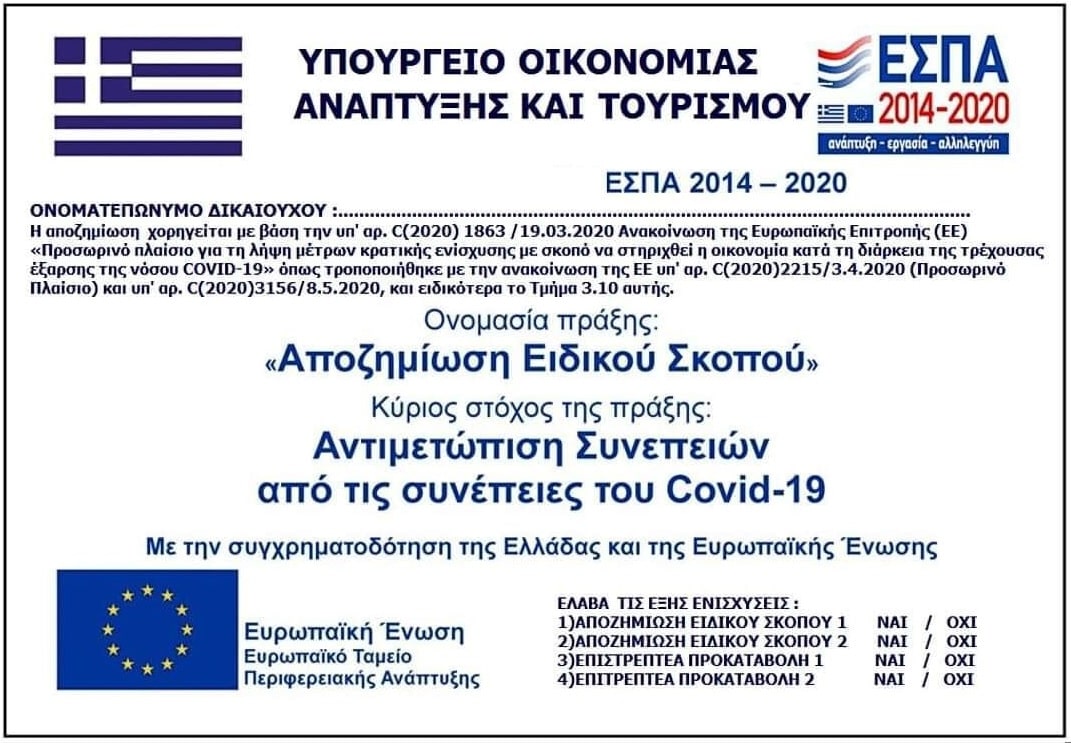The Storyline Of The Minoan Civilisation
The island of Crete
• The 5th largest in the Mediterranean sea
• The largest island in Greece
• The stepping stone of the 3 Continents (Europe, Asia, Africa)
🗓️ 2.000 BC
Knossos Palace
The most important archaeological site in Crete.
Multiple-level building, more than 20.000 sq.m., 1.500 rooms
Population of 100.000 people (at it’s peak) (1.700 BC)
Destruction of Knossos:
Volcano of Santorini, earthquakes (1.600 BC)
Invasion of the Mycenaeans (1.450 BC)
By fire (1.350 BC)
Probably invaded by pirates (Sea People) (1.200 BC)
Discovery, rebuilding of Knossos, by the archaeologist Arthur Evans (from 1.900 AC)
🗓️ 1.800 BC
The Minoan Language
The Minoan language is written in the Cretan hieroglyphs and later in the Linear A syllabary, the first in Europe. As the Cretan hieroglyphs are undeciphered and Linear A only partly deciphered, the Minoan language is unknown and unclassified.
The term linear refers to the fact that the script was written using a stylus to cut lines into a tablet of clay, as opposed to cuneiform, which was written by using a stylus to press wedges into the clay. Linear A belongs to the group of scripts that evolved independently of the Egyptian and Mesopotamian systems. The Linear A texts, mostly written in clay tablets, are spread all over Crete in more than 40 localities but also found on the islands of Milos, Kea, Kythira, Thira(Santorini), Miletus and even Troy. During the second millennium BC, there were four major branches: Linear A, Linear B, Cypro-Minoan, and Cretan hieroglyphic.
In the 1950s, Linear B was deciphered as Mycenaean Greek. Linear B shares many symbols with Linear A, and they may notate similar syllabic values, but neither those nor any other proposed readings lead to a language that scholars can read.
🗓️ 1.750 BC
Agricultural Festivals
The Minoans raised cattle, sheep, pigs, goats and domesticated bees. They grew wheat, barley, vetch and chickpeas. They also cultivated grapes, figs and olives, grew poppies for seed, many vegetables and perhaps opium.
Found at Hagia Triada, an elite site associated with Minoan palaces and dating to the Neopalatial period, (1600-1450 B.C.E.) the Harvester Vase displays a detailed and fascinating scene of men marching and singing in what appears to be a harvest celebration.
It is made of black steatite and is shaped to look like a similar vessel made of an even more valuable material: an ostrich egg shell. Ostrich egg rhyta were some of the most luxurious and exotic ritual goods in the Aegean Bronze Age.
This marching group is led by an apparently older man. Another man, is shaking a sistrum (a musical instrument used in religious rituals).
🗓️ 1.700 BC
The Minoan Naval Power
The Minoans were a far reaching naval power. Their big ships were about 50 meters long and could allegedly reach Scandinavia and North America.
Sir Arthur Evans described them as free and independent people. He named them the “Minoans” but papyri found in Egypt identify them as Keftiu. The Egyptian word Keftiu, which leads to its Greek origin translates as “the nail of the earth”, the nail meaning “the peak of a mountain”.
Thus, the name Kefti primarily means “at the nail”, a term probably used by the sailors of the Bronze Age to indicate the dominant landmark of Crete. Α Minoan sanctuary on the highest mountain, called Karfi.
🗓️ 1.700 BC
The Snake Goddess
🗓️ 1.650 BC
Bull Leaping
The Minoans engaged in bull leaping, a non-violent form of bull fighting, as a religious ritual or as a sport.
This ritual is hypothesized to have consisted of an acrobatic leap over a bull, such that when the leaper grasped the bull’s horns, the bull would violently jerk its neck upwards giving the leaper the momentum necessary to perform somersaults and other acrobatic tricks or stunts.
It’s important to be noted that they did not kill the bull, for the bull was the subject of veneration and worship.
Based on wall paintings and statuettes.
🗓️ 1.650 BC
The Fisherman of Santorini
The “Fisherman” (1650 BC) is 147 cm high and is one of the most important works of the Aegean found on Akrotiri, which is a Minoan Bronze Age settlement on the volcanic Greek island of Santorini (Thera).
The Minoans were great masters of the sea and had a great relationship with the Aegean. Santorini was one of their bases. The blue color represents the shadow of his closely shaved head.
🗓️ 1.550 BC
The Prince of Lilies
The Prince of the Lilies is a Minoan Fresco from Knossos was found in fragments and thoroughly restored.
His stance appears to indicate that he was pulling an animal or imaginary creature (sphinx or griffin) with his left hand and he was wearing a loin-cloth with wide belt, a necklace and an elaborate head-dress decorated with lilies and peacock feathers.
The figure was named « prince », because it was thought to represent the Priest-King who lived in the Knossos palace.
🗓️ 1.500 BC
The Minoan Throne
Europe’s first throne. Named after the mythical king Minos. Found in Knossos Palace. Made out of marble. Some historians claimed they elected their leaders every nine years as depicted by the nine circles of the throne.
The Griffin, the mythical creature, next to the throne, is half-lion & half- eagle, showing real leadership and serves a religious purpose.
🗓️ 1.500 BC
The Blue Monkeys
🗓️ 1.400 BC
La parisienne or the Minoan Lady
A fresco found in Knossos Palace. Named after that to show her beauty.
The Minoan Women
The Minoan ladies were portrayed in frescos as bare-chested with makeup on their lips and eyes.
Their fashion was consisted by a tight bodice which left the breasts bare, a long flounced skirt, and an apron with embroidered or woven decoration.
Women not only were respected, but they also held positions of authority.
The snake priestesses played a dominant role in Minoan society and had many attendance as they represented the mother goddess.
🗓️ 1.400 BC
The Palaikastro Kouros
Standing roughly 50 cm tall, its large size by the standards of other figurines in Minoan art, and the value of its materials (ivory and gold) may indicate that it was a cult image for worship, the only one known from the Minoan civilization and a special relationship with Egypt. It was the only male statue, found burnt and smashed to pieces, possibly a result of a civil war.
🗓️ 1.350 BC
Minoan Larnax (bathtub-shaped)
The Minoans had a unique method for preserving their deceased., in a bathtub-shaped larnax made of Clay.
It was essentially a sarcophagus or coffin. There are two types of larnax. The first is in the shape of a wooden chest with a gabled lid, while the second resembles a bathtub. The deceased was placed in a fetal position.
Myths & Legends
Queen Pasiphae & The Minotaur
In Greek mythology, the Minotaur is a mythical creature portrayed in Classical times with the head and tail of a bull and the body of a man translated as “(the) Bull of Minos. Held in the labyrinth designed by the craftsman Daedalus,
ordered by the King who tried to hide this great disgrace.
Minos’s wife, queen Pasiphae’s love for a white bull that the god Poseidon offered as a gift. The offspring of their lawless affair was the Minotaur. In the labyrinth every nine years, 7 noble youths and 7 maidens from Athens, were driven to their death as a blood tribute to almighty king Minos in retaliation for the murder of his son, Androgeus, in Athens.
Nevertheless, Theseus, the greatest Greek hero after Hercules helped by Ariadne, the daughter of Minos, with her red ball of thread, saved everyone that was meant to be devoured by this weird creature.
Talos, Hephestus & The Argonauts
The myth describes Talos as a giant bronze man built by Hephaestus, the Greek god of invention and blacksmithing. He was considered the first robot created or imagined, in history. Talos was commissioned by Zeus, the king of Greek gods, to protect the island of Crete and princess Europa, as a gift to King Minos, from invaders and pirates. He marched around the island three times every day and hurled boulders at approaching enemy ships.
Talos had one vein, which went from his neck to his ankle, bound shut by only one bronze nail. The Argo, transporting Jason and the Argonauts, approached Crete after obtaining the Golden Fleece. As guardian of the island, Talos kept the Argo at bay by hurling great boulders at it. According to pseudo-Apollodorus‘ Bibliotheke, Talos was slain when Medea the sorceress either drove him mad with drugs, or deceived him into believing that she would make him immortal by removing the nail.
King Aegeus
In Greek mythology, Aegeus was an archaic figure, born in Megara. was the father of Theseus, the founder of Athenian institutions and one of the kings of Athens.
While visiting in Athens, King Minos’ son, Androgeus managed to defeat Aegeus in every contest during the Panathenaic Games. Out of envy, Aegeus sent him to conquer the Marathonian Bull, which killed him. Minos was angry and declared war on Athens. He offered the Athenians peace, however, under the condition that Athens would send seven young men and seven young women every nine years to Crete to be fed to the Minotaur, a vicious monster. This continued until Theseus killed the Minotaur with the help of Ariadne, Minos’ daughter.
After his adventures in Crete, Theseus returned by ship to Athens. His father, Aegeus previously had asked him to hang a white sail as a sign that Theseus is alive, but Theseus neglected this request because of their celebration. When Aegeus saw Theseus’ ships without a white sail, he assumed the worst and threw himself in his grief into the sea, named after him the Aegean Sea.
Hero Theseus & Ariadne
Theseus was a Greek king of Athens, according to Greek mythology, son of Aegeas and Aethra and the most popular hero in ancient Greece after Hercules. Aethra dreamed of Athena, who guided her to walk on reefs in islet Sphere. As she was walking in the sea, it is said that Poseidon fertilized her. The hero, therefore, had an uncertain paternity, divided between the Athenian king and the god of the sea.
Theseus’s most famous achievement was the killing of the Minotaur. Theseus decided to set sail for Crete and put an end to the shameful contribution of blood. He took the place of one of the 7 young people and sailed with them from Faliro. in Crete he met Minos’s daughter, Ariadne, and the two young people fell in love. The hero with “Mitos of Ariadne” killed the Minotaur and they escaped.
On the return trip they made a stop in Naxos, where Ariadne stayed and married the god Dionysus. The God gave her a golden wreath, a work of Hephaestus, and brought her to Olympus. The mortal Ariadne thus came to become the immortal wife of a god.
God Zeus & Princess Europa
In Greek mythology, Europa was a Phoenician princess of Argive Greek origin, and the mother of King Minos of Crete. The continent of Europe is named after her. Zeus, transformed into a tamed, white bull, abducted princess Europe and took her from the land of Phoenicia to the island of Crete. There he regained his human form and seduced her under an evergreen tree.
She gave birth to three sons of Zeus, Minos, Rhadamanthys and Sarpedon. These men were known for their fairness and became the three judges of the Underworld, when they died. In fact, Minos founded the town of Knossos and gave his name to an entire civilization, the Minoan civilization.
Zeus loved Europa so much that he showered her with three priceless gifts. The first one was a bronze man, Talos, who served as a guard to her. He was the bronze giant that the Argonauts met and killed in their attempt to shore on Crete. The second was a dog, Laelaps, which could hunt anything she wanted. The last one was a javelin that had the power to hit the target, whatever it was. Europa was later married to one of the kings of Crete, Asterius, who adopted her sons and made her the first queen of Crete.
Nowadays, this lovely fable is depicted in the 2-euro coin of the European Union to pay attribute to the Godmother of Europe. And the name Europa has been given to one of Jupiter’s 16 moons.
Icarus & Deadalus
In Greek mythology, Icarus was the son of the master craftsman Daedalus, the creator of the Labyrinth. Icarus and Daedalus attempt to escape from Crete by means of wings that Daedalus constructed from feathers and wax.
Icarus ignores Daedalus’ instructions not to fly too close to the sun, causing the wax in his wings to melt. Icarus fell into the sea and drowned. The Icarian Sea, where he fell, was named after him and there is also a nearby small island called Icaria.
Infancy of Zeus
Important Cretan Figures
El Greco
🗓️ (1541 – 1614)
Domḗnikos Theotokópoulos most widely known as El Greco was a Greek painter, sculptor and architect of the Spanish Renaissance.
El Greco was born in the Kingdom of Candia (modern Crete), which was at that time part of the Republic of Venice, Italy, and the center of Post-Byzantine art. He trained and became a master within that tradition before traveling at age 26 to Venice, as other Greek artists had done. In 1577, he moved to Toledo, Spain, where he lived and worked until his death. In Toledo, El Greco received several major commissions and produced his best-known paintings, such as View of Toledo and Opening of the Fifth Seal.
One of the great Cretan figures that gave shape to modern Crete & Greece!
Chariklia Daskalaki
🗓️ (1866)
The Cretan heroine Chariklia Daskalaki is associated with the insurrection of 1866 at the Arkadi Monastery, one of Crete’s most venerated symbols of freedom. Under siege from the Turks, insurgent monks and villagers led by the abbot Gabriel blew themselves up by igniting the powder magazines rather than surrender, a dramatic event that brought home to Europe the intensity of the problem of Cretan independence.
Odysseus Elytis
🗓️ (1911 – 1996)
Heraklion, Crete
(real name: Odysseus Alepoudellis) He was one of the most important Greek poets, a member of the literary generation of the 30s. He was awarded in 1960 with the State Prize for Poetry and in 1979 with the Nobel Prize for Literature, the second and last Greek to date to be awarded the Nobel Prize for Literature. His best known poetic works are Axion esti, Helios o pritos and Orientations.
He formed a personal poetic idiom and is considered one of the innovators of Greek poetry. Many of his poems were set to music, while his collections have been translated into many foreign languages. His work also includes translations of poetry and plays. He was a member of the International Union of Art Critics and the European Society of Critics, a representative at the Rencontres Internationales in Geneva and Incontro Romano della Cultura in Rome.
Michail Korakas
🗓️ (1797–1882)
Heraklion, Crete
Michail Korakas was a Cretan revolutionary, who played a major role in successive Cretan revolts against the Ottoman Empire. Upon the outbreak of the Greek War of Independence in 1821, he joined the Cretan uprising.
1797 – Born in Pombia, central Crete
1827 – Battle of Malaxa & Battle of Karpathos
1828 – Battle of Peloponnese
1841 – Uprisings
1858 – Uprisings & became yusbashi (Captain) of the local Cretan gendarmerie
1866 – The Great Cretan Revolution
1867 – Became commander-in-chief of the 12 eastern provinces of Crete
1878 – Uprising of the eastern provinces
1879 – Left Crete for Athens and then for Egypt
1882 – Passed away in his village








